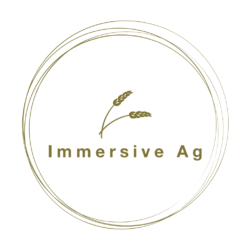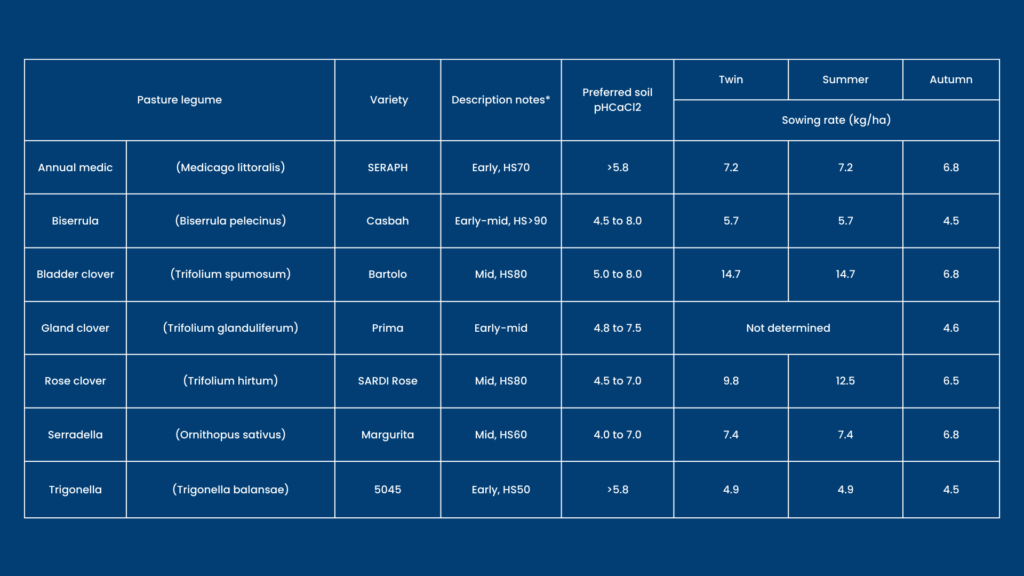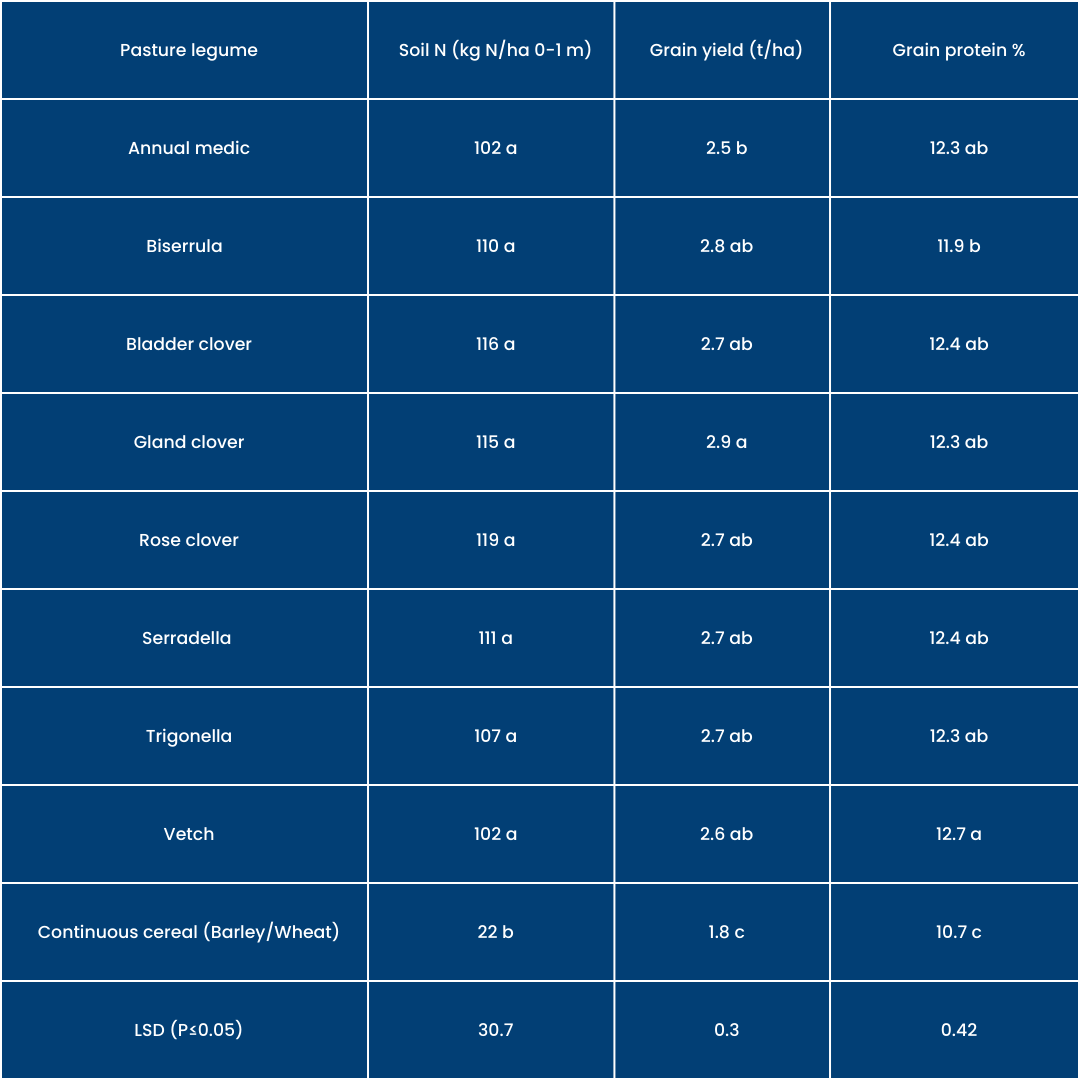Background
The uptake of new pasture legume varieties in the Victorian Mallee is currently low. Annual medic and vetch remain the dominant crop choices however, there are a range of new pasture varieties which have potential in low to medium rainfall environments. A number of these pasture legumes come from the Western Australian breeding program and have limited evaluation in the Mallee. They possess different maturities, growth habits and are generally suited to neutral to acidic soil types.
A significant obstacle to the adoption of new pastures legumes is the high cost of pasture seed and difficulty in establishment. A feature of some of the new pastures under investigation is their aerial seeded habit and retention of seed, allowing seed to be grower harvested and re-sown with standard cropping equipment. This is in comparison to traditional medic pastures which require costly vacuum harvesting equipment.
The majority of medic and vetch currently sown in the region is established in autumn. A number of the new pasture legumes contain hard seed characteristics that provides a viable pasture after many cropping phases. The capacity to employ alternative establishment methods such as twin (sown with crop before the pasture phase) and summer sowing has been a particularly effective strategy across regions of NSW and Western Australia under a range of growing conditions including extreme drought (Nutt et al. 2021). Hard seeded pasture legumes offer capacity to develop flexible crop-pasture rotation systems that exploit this characteristic. Summer sowing was developed to utilise the opportunity of being able to header harvest pasture legume seed easily on farm and then successfully establish a pasture without needing to further process the seed. This project is examining the potential of different pasture legume species to be established more efficiently, reduce establishment costs and improve productivity from greater water use efficiency.
Aims
The Dryland Legumes Pasture Systems (DLPS) project was undertaken to improve the quality of annual pastures on mixed farms receiving less than 450 mm annual rainfall in Western Australia, South Australia, Victoria and New South Wales. A multi-season trial was established at Piangil, Victoria and aimed to;
- Aid growers with the selection of new pastures in comparison to traditional medic and vetch crops
- Improve pasture establishment using novel sowing strategies
- Assess seedbank regeneration of new pasture legumes
- Evaluate the harvestability of pastures using standard harvesting equipment
- Quantify the farming system benefits of regenerating legume pasture systems
Method
A replicated trial was established at Piangil from 2018 to 2021. The trial included 3 main plots (establishment method) x 7 subplots (pasture variety) x 4 replicates. The three establishment methods were used;
- Twin-sown, where ‘hard’ pasture seed/pod was sown with Compass barley seed on 28 June 2018 for pasture establishment in 2019
- Summer-sown (7 February 2019), where ‘hard’ seed/pod was sown in summer and softens to establish on the autumn break
- Autumn-sown (control treatment), where ‘soft’ germinable seed is sown on the break (13 May 2019) of the season
Seven pasture species were evaluated in this trial, Annual Medic, Biserrula, Bladder clover, Gland clover, Rose clover, Serradella and Trigonella.
The seeding rate of the pasture legumes was calculated on the basis of providing each species and establishment method with 100 germinable seeds/m2 in autumn 2019 (Table 3). This took into account seed regeneration from twin sowing and ‘soft’ seed percentages. Any 2018 germination from the twin sowing which remained in 2019 was chemically removed. Two comparison treatments were also sown in 2019: Barley to represent a continuous cereal system and autumn sown vetch that was browned manured in spring.
In 2020 the entire trial was sown to Catapult wheat on 28 April by direct drilling into the existing pasture, barley and vetch plots. Basal fertiliser was applied as 62.5 kg/ha of DAP S Z with 43 kg/ha urea top dressed on all plots on 19 June 2020. All pasture species were allowed to regenerate in 2021.
Results
2019 Pasture Establishment and Production
Twin and summer sowing strategies were useful tactics when compared to conventional autumn sowing for some varieties. For bladder clover, gland clover and rose clover similar establishment rates were achieved from either autumn or twin sowing. Interestingly summer sowing was best strategy for Serradella and Trigonella. Autumn sowing was the best timing for Biserrula and annual medic.
Several new pasture legumes produced similar dry matter compared to commonly grown annual medic under tough growing where the site received less than half its long-term seasonal rainfall. Rose clover and bladder clover dry matter production was comparable to annual medic (Table 2). Biserrula and Serradella produced the next highest dry matter followed by Trigonella and gland clover. However, all regenerating pastures had lower production than the sown vetch treatment. Vetch which was terminated in September, still produced 3.2 t/ha of biomass. Similarly, the continuous cereal treatment was highly productive in the first year and produced a grain yield of 2.8 t/ha.
Break effects in the 2020 Wheat Crop
Soil available nitrogen at the beginning of 2020 was high for all pasture species. The continuous cereal treatment has the lowest soil available nitrogen at 22 kg N/ha, clearly showing the benefit of having break crops in the system. All other pasture treatments and vetch had soil available nitrogen levels which ranged between 102 and 116 kg N/ha. Wheat grain yield and protein results highlighted the longer-term benefits of pasture systems. The continuous cereal treatment had the lowest grain yield of 1.8 t/ha and 10.7% protein. This was expected due to the low starting soil nitrogen (22 kg N/ha) compared to all other treatments. For all pasture and vetch varieties there was little difference in grain yield ranging 2.6 – 2.8 t/ha. Grain protein levels were consistent across the pasture and vetch treatments averaging 12.3%
Pasture regeneration 2021
Pasture regeneration was adequate (>200 plants/m2) for five of the seven pastures in year three. Rose clover, bladder clover, annual medic, biserrula and gland clover were all greater than 231 plants/m2. The lowest regeneration at Piangil was observed for Serradella and Trigonella. Seredella has shown a number of favourable characteristics across the first two seasons in terms of biomass production and benefits to the following wheat crop.
However, in year three its persistence through the cropping phase was low which would be a problem for growers who want to maintain a seedbank. Dry matter regeneration was highest for Biserrula and rose clover across four sampling dates). At various sampling times other pastures were also high yielding, for example, in September annual medic dry matter was higher than the other pasture options. Later in the season bladder clover and Serradella maintained similar biomass compared to Biserulla and rose clover.
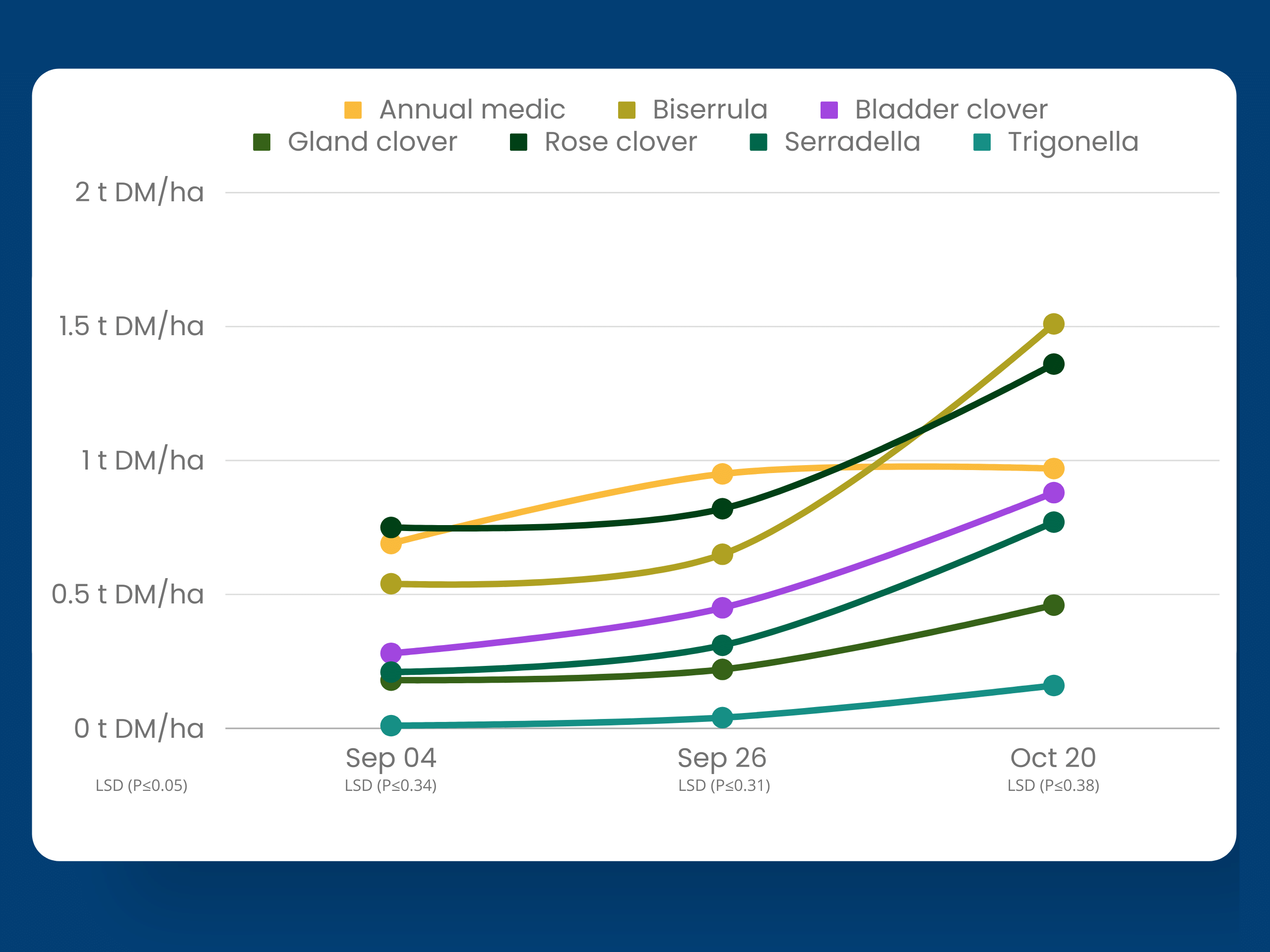
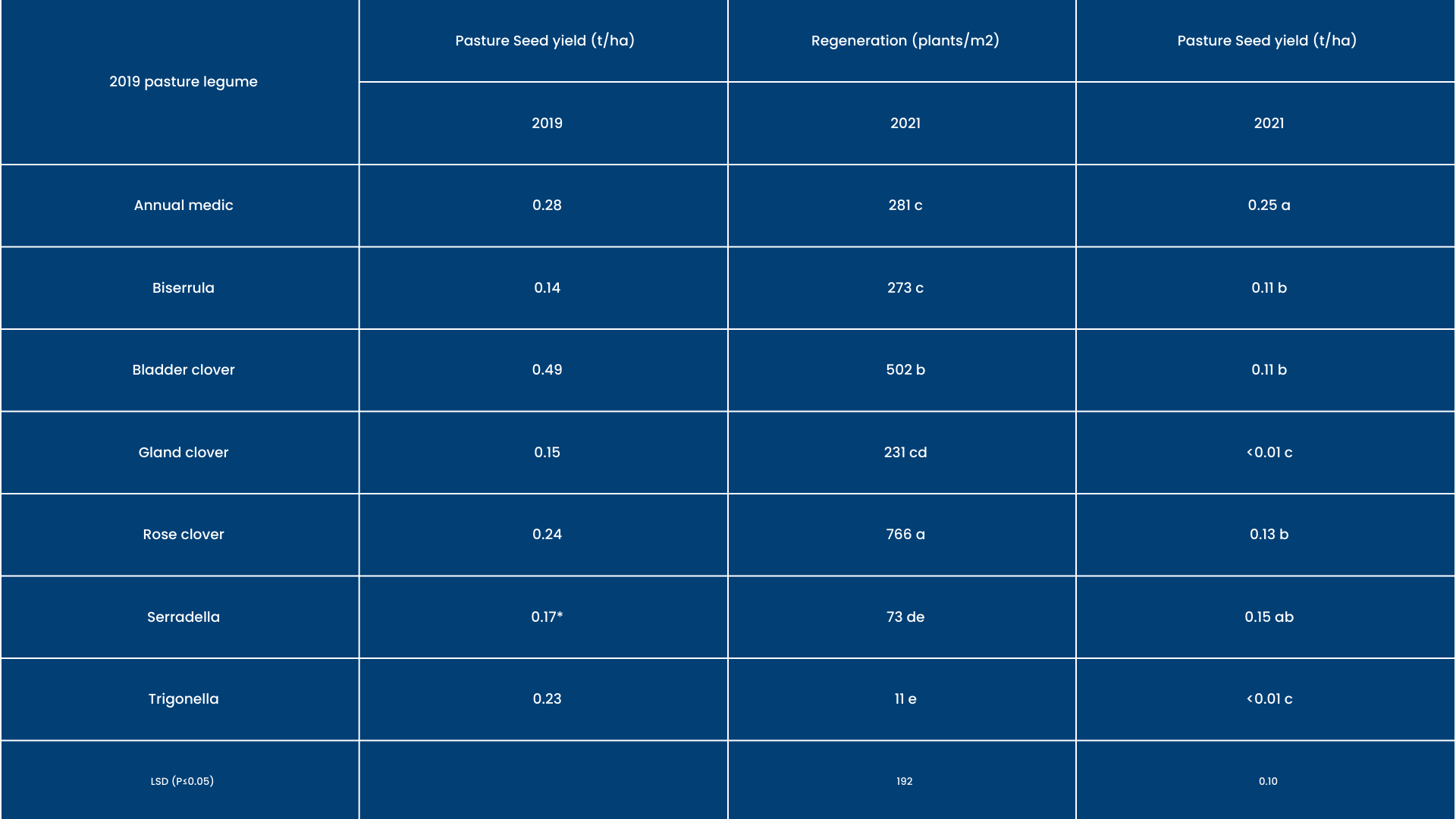
360 Virtual Tour
Double click for full screen
Acknowledgements
This virtual field day has been developed as part of the Mallee Sustainable Farming (MSF) project:
“Facilitating enhanced knowledge sharing of Mallee sustainable farming practices”
This project is supported by the Mallee Catchment Management Authority with funding from the Australian Government.

This project was supported by funding from the Australian Government Department of Agriculture, Water & Environment as part of its Rural R&D for Profit program, the Grains Research and Development Corporation, Meat and Livestock Australia and Australian Wool Innovation. The research partners include the South Australian Research and Development Institute, Murdoch University, the Commonwealth Scientific and Industrial Research Organisation, the WA Department of Primary Industries and Regional Development, the NSW Department of Primary Industries and Charles Sturt University, as well as grower groups.

